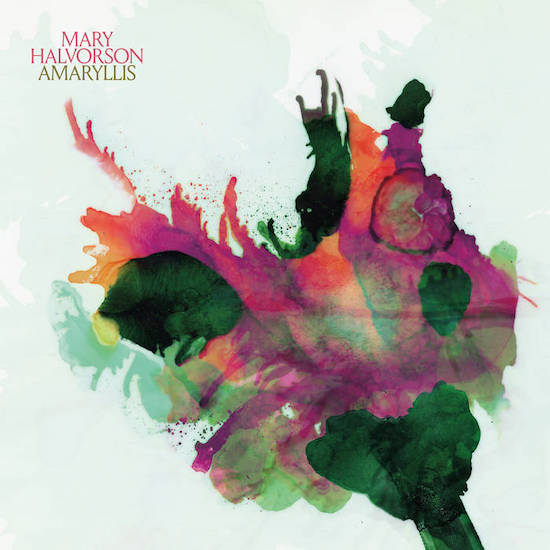Mary Halvorson has released a near impeccable run of albums over the past year or so. Never Is Enough with her trio Thumbscrew, Artlessly Falling with her lyric-based quintet Code Girl, Searching For The Disappearing Hour with Sylvie Courvoisier, and my personal favourite out of the bunch (along with this new release), John Zorn’s Bagatelles, Volume 1 as the Mary Halvorson Quartet. Even if Halvorson were to release no further new music, a strong case would have already been made for her being one of the most inventive and distinctive voices of her generation. With this major new set of eleven tracks, her most compelling release since 2016’s Away With You, Halvorson establishes without any doubt her position at the vanguard of jazz and modern composition. For anyone who is yet to get on board with her work, this stunning ‘post-genre’ release offers the best chance to date to start appreciating her multifarious musical activities.
Amaryllis is the more jazz-oriented of the two albums, recorded with an outstanding six-piece band that includes Thumbscrew’s Tomas Fujiwara on drums, the excellent Patricia Brennan on vibraphone and Jacob Garchick on trombone. Like Charles Mingus’ Black Saint and the Sinner Lady or Henry Cow’s debut Legend, however, jazz is just one of several elusive elements in this intoxicating mix. Although the stylistic variations across the two LPs make it seem as though there is more music here than could reasonably be expected to be contained within eleven tracks, much of it is highly accessible, addictive even.
The reason for this is obvious from the onset. Halvorson clearly has enviable technique and imagination, but she also has the ability to craft instantly memorable tunes. ‘Night Shift’ and ‘Amaryllis’, from the first side of the first LP, soar joyously, driven by the fluid interplay between trumpet, vibraphone and Halvorson’s sublime guitar. It’s a truth often repeated about Halvorson’s playing, that her distinctive sound is instantly recognisable. She does also occasionally bring to mind Fred Frith’s playing – never more so than on the giddy rush of ‘Amaryllis’, a track capable of inducing similar delights to Henry Cow’s ‘Nirvana For Mice’.
Questions concerning which genres this music operates within are thrown into even starker relief with Belladonna, Halvorson’s first composition specifically for string quartet. Halvorson initially picked up the violin before finding her calling on guitar, and had apparently long harboured the desire to write and record with a string quartet. The pandemic brought with it the time to focus on such a project, and a long-standing friendship with violinist, violist and composer, Jessica Pavone, provided an opportunity for mentorship and feedback.
The resulting music is stunning, perhaps a little more difficult to get a handle on than Amaryllis, but offering an invigorating glimpse into new territory for Halvorson. Though more abstract than its companion volume, Belladonna’s instrumentation tugs at the heartstrings aplenty. It’s not for nothing that British conductor, Jeffrey Tate once said, “The most perfect expression of human behaviour is a string quartet.” Viewed as standalone albums, Amaryllis and Belladonna are both excellent releases with much to reward the attentive listener. Taken together, they represent a synergistic work illustrative of a composer reaching new heights, while intimating that perhaps there are further altitudes left yet for her to explore.


